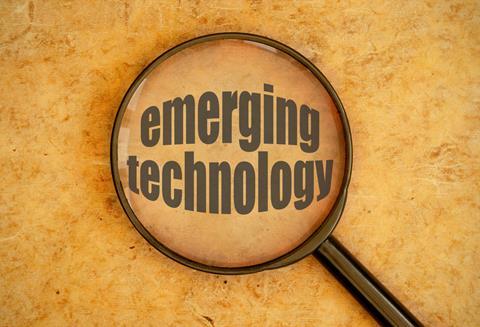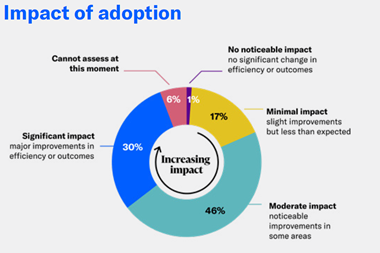Mark Gilbert, strategic client director and head of corporate at Sedgwick says despite a growing focus on the benefits of technology and artificial intelligence (AI), there are a complex matrix of risks which need to be addressed.
The changing nature of the risks faced by businesses of all sizes has seen the role of the risk manager continue to evolve and with it the relationship with their insurance and risk partners.
Mark Gilbert, strategic client director and head of corporate at Sedgwick says the dynamic for risk managers has shifted dramatically and - increasingly - risk managers are recognising the benefits of robust data and analytics to create more efficient risk management strategies and and speed up their response to the changing risk landscape.

However, in discussions with risk managers in recent months he says there remains one overarching theme.
“Risk managers are increasingly focused on the use cases and benefits of AI, particularly with regards to how it can enhance the customer journey and complement human capital within organisations,” he explains.
“However, like the early days of cyber, there is still a degree of uncertainty surrounding AI investments. Key concerns include identifying the optimal fit for AI within organisations, understanding the true business benefits and ROI, and navigating the change management journey.”
This focus comes at a time when the risk environment has never been more complex, and as such it is driving a change in the types of support and services risk managers are expecting.
“Corporate risk managers increasingly view their insurance and risk partners as trusted advisers,” Gilbert says. “There is a growing expectation for these partners to set aside traditional competitive tendencies and work collaboratively, forming ecosystems to support clients.
“Key concerns include identifying the optimal fit for AI within organisations, understanding the true business benefits and ROI, and navigating the change management journey.”
“By combining their expertise, talent, and resources, and recognising the unique value each brings, these partnerships across the insurance and risk supply chain can deliver more comprehensive and optimal solutions and insights to meet clients’ needs.
“This collaborative approach extends to non-insurable risks, with clients often seeking to leverage the benefits and insights from established relationships with their insurance and risk partners, who have extensive experience and knowledge in addressing new and emerging risk management challenges across a broad client base.”
The risk management function is also evolving to deal with ever growing regulation and broadening expectations, particularly related to areas such as ESG, people risks, and reputational threats.
“The traditional enterprise risk management function is evolving as new business risks emerge,” Gilbert continues. “The increased emphasis on corporate ESG and sustainability performance has placed greater demands on corporate risk functions.
“Clients are recognising the need for enhanced collaboration between departments that were perhaps more siloed in the past, such as HR, environment health and safety, and enterprise risk and finance. These functions are now engaging in regular dialogue to address the complex and interconnected nature of modern risk management.”
For Gilbert, risk managers need to look beyond the use of new and evolving technology to ensure that other evolving risks are not overlooked.
“Clients must understand, measure, monitor, and improve their ESG and sustainability performance, embedding these processes across their entire operations”
“From both a financial and reputational perspective, meeting EU and UK corporate sustainability targets is a significant risk issue for many corporate clients,” he says. “Navigating the plethora of complex regulations requires substantial investment of time and money.
“Clients must understand, measure, monitor, and improve their ESG and sustainability performance, embedding these processes across their entire operations, including supply chains. Transitioning to greener processes, resources, and solutions presents considerable change management challenges.”
Gilbert continues: “The biggest issue for corporates may be achieving the optimal balance of investment, resources, and expertise in managing a diverse range of risks. These include emerging risks related to ESG performance and technology, as well as traditional risks associated with their insurance programmes and enterprise risk issues such as cyber threats, financial stability, IT, business interruption, supply chain management, staff turnover, and operational risks.
Gilbert is in no doubt that risk managers will be keen to seek answers to a wide range of challenges.
“We expect discussions with risk managers to focus on the themes of AI and technology integration, the complexity of emerging risks, sustainability and ESG performance, and evolving risk management functions,” he explains. “Additionally, I am sure we will cover the role of risk insight through data in addressing these issues.
“By leveraging data analytics, risk managers can gain deeper insights into emerging risks, optimise their risk management strategies, and make more informed decisions. Discussing how they are currently using data and what further support they need in this area will be a key part of our conversations.”














No comments yet